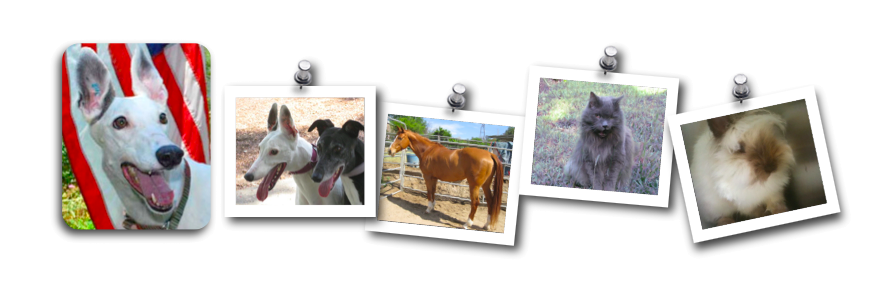While massage is not likely to do harm, it most certainly can. Generally,
people who believe that it can't are also not aware of how powerfully it can
affect the body for good. And anything with that kind of power can
potentially cause harm, too, if not used appropriately. This is just like
medicine, which can either heal or poison, depending on how it's used and
also on the condition of the person who takes it.
Copyright © 2010 All About Animal Massage
6
So the two factors for whether
massage will do good or harm
are,
A. how massage is applied,
and
B. the condition of the animal
(or person) receiving it.
Here are a few easy tips to help
you avoid causing harm for either of these reasons.
1. The changes caused by massage for the circulatory and neurological
systems in particular, can be harmful if your animal has a fever or is in
a state of shock. Do not massage in these situations.
2. Applying massage strokes or stretches too quickly can lead to damage
of tissue before your animal has a chance to communicate with you
about something that hurts.
3. Listen to your animal's feedback. If they don't like something, stop.
This will help you avoid most problems, but there are some important
exceptions to keep in mind. If your animal is too ill, emotionally shut
down and/or trained to politely endure whatever you do to it, you may
not get accurate feedback. On the other hand, many animals will
protest or try to avoid things that are not necessarily causing harm, but
may be uncomfortable or just plain unfamiliar to them, or the touch
may trigger an unpleasant memory. In these cases, if you stop what
they don't seem to like, you will safely avoid causing harm, a very
good thing, although you may also miss an opportunity to help with
some more healing for a problem area. Persisting when your animal is
unsure is a very fine line to walk, and training and experience
becomes much more important. When in doubt, an appointment with a
professional may be just thing to help you get more accomplished
with massage while avoiding doing any harm.
Because massage does have very real physiological effects on the body,
professional massage therapists receive training about contraindications
(when not to massage) and precautions (when and how to adapt the massage
for certain conditions). You can read more about this in Animal Massage: A
Consumer Guide, as well as in Chapter 6: Guidelines for Effectiveness and
Copyright © 2010 All About Animal Massage
Safety, in The Dog Lover's Guide to Massage and The Horse Lover's Guide
to Massage. You can also usually find information on contraindications and
precautions in any book on massage for animals or for people, though some
situations may be specific to one or the other.
While it's important to be aware that massage can indeed cause harm,
remember that as long as your animal is in good health and you're listening
to their feedback, you have little to worry about. If your animal is not in
good health, just ask your vet about whether and how massage might still be
used to support their comfort and wellness. (But if your vet says, "Sure, go
ahead and try massage. It couldn't hurt."
